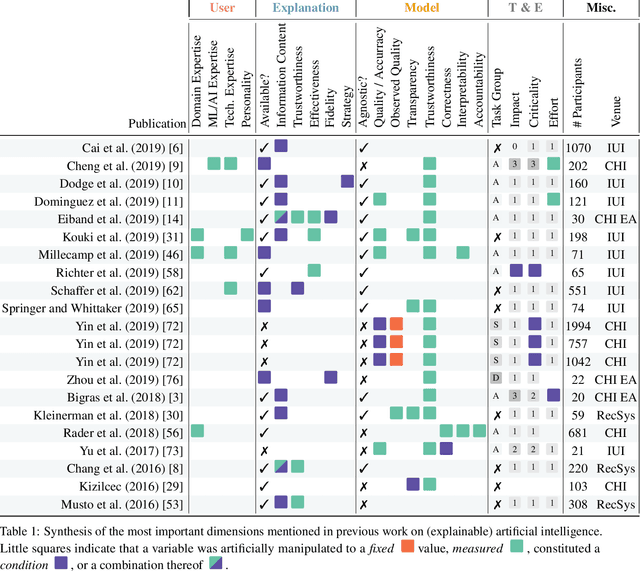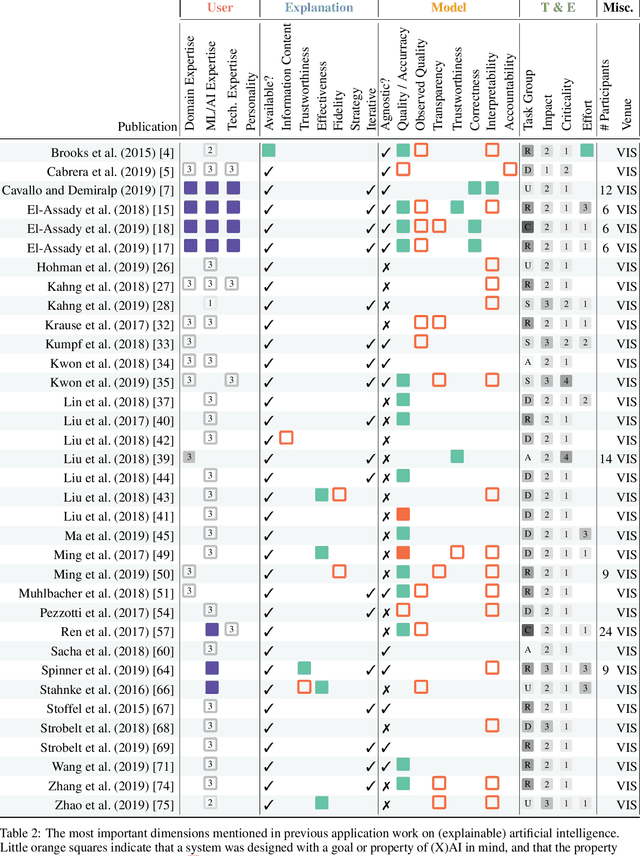Should We Trust AI? Design Dimensions for Structured Experimental Evaluations
Paper and Code
Sep 14, 2020



This paper systematically derives design dimensions for the structured evaluation of explainable artificial intelligence (XAI) approaches. These dimensions enable a descriptive characterization, facilitating comparisons between different study designs. They further structure the design space of XAI, converging towards a precise terminology required for a rigorous study of XAI. Our literature review differentiates between comparative studies and application papers, revealing methodological differences between the fields of machine learning, human-computer interaction, and visual analytics. Generally, each of these disciplines targets specific parts of the XAI process. Bridging the resulting gaps enables a holistic evaluation of XAI in real-world scenarios, as proposed by our conceptual model characterizing bias sources and trust-building. Furthermore, we identify and discuss the potential for future work based on observed research gaps that should lead to better coverage of the proposed model.
 Add to Chrome
Add to Chrome Add to Firefox
Add to Firefox Add to Edge
Add to Edge